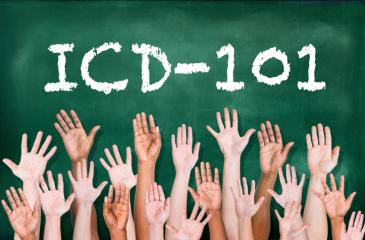Name: _____________________________________________ Date: _______________
1. A CPT code has ___5_____ digits and an ICD-9-CM code has ___3-5____ digits.
2. Explain the difference between a CPT code and an ICD-9-CM code.
CPT (Current Procedural Terminology), standardized numeric system (5 digits without modifiers) is used to report WHAT medical services and procedures are done to the patient.
ICD9 (International Classification of Diseases – Ninth Edition) a Universal coding system is used to describe WHY a service was performed. Codes range from 3-5 digits.
3. What is the purpose of a modifier?
To identify in certain circumstances that a service or procedure has been altered by some specific circumstance but it has not changed the basic definition or code (this is the literal CPT book definition, but anything remotely close to this is acceptable).
4. What are E&M codes?
Evaluation and Management Codes that describe different levels of physician “visits” in various healthcare settings.
5. What does “COB” stand for? Coordination of Benefits
6. What insurance information do you obtain when the patient contacts our office with new insurance?
Guarantor name, guarantor DOB, guarantor policy and group number, new insurance name, address for claims submission, effective date of new policy, and (if possible) termination date of previous policy.
7. If the patient has Medicare and Medicaid, which insurance would you bill first?
Medicare would always be billed first.
8. What does HIPAA stand for? And what does it mean to you? Health Insurance Portability and Accountability Act.
HIPAA designates certain standards and procedures that must be followed to keep secure PHI (protected Health Information). HIPAA also calls for standardization of transaction code sets and various privacy laws (looking for some level of knowledge about the general concept of HIPAA).
9. How would you handle each of the following EOB rejections?...
<p





